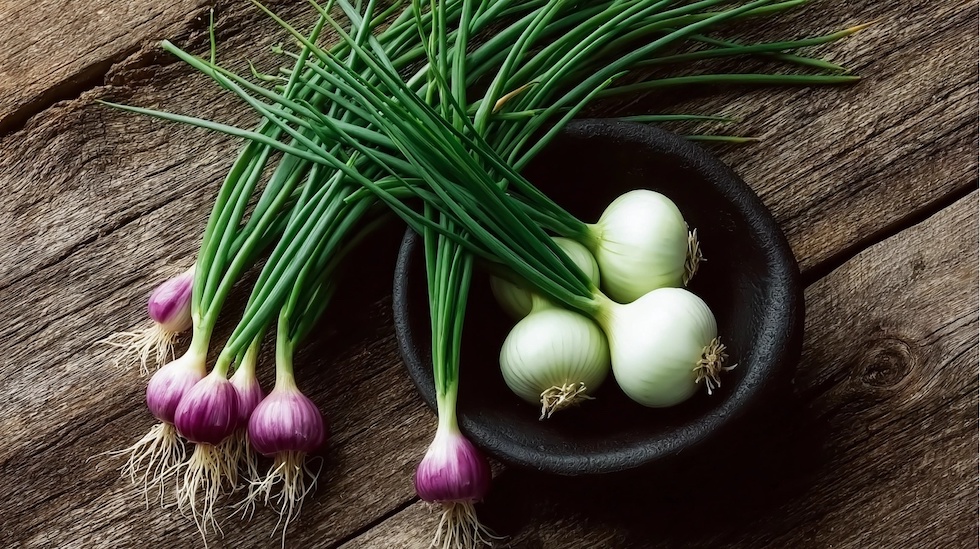Cooking onions – the everyday hero
The cooking onion, often referred to simply as the yellow onion, is one of the best known varieties of Allium cepa. It’s been with us since time immemorial, and while it doesn’t always take the spotlight on the plate, without it, the kitchen would simply be unimaginable. It’s in the stew base, in stir-fried soup, in stir-fried vegetables and in a thousand other dishes – almost unnoticed, but indispensable.

Where did the cooking onion come from?
The origins of the cooking onion go back to ancient Asia, probably from Iran and Pakistan, from where it gradually spread to Europe and all over the world. It was cultivated by the ancient Egyptians and was even revered as a sacred plant. It was also used as a medicinal plant in the Middle Ages, but the real revolution came with gastronomy: we realised that it makes all dishes better. 🍲
How important are cooking onions in the kitchen?
Importance level: 5/5
There are few staple vegetables as universal and ubiquitous as the cooking onion. In Hungarian cuisine, there is hardly a classic dish that does not start with the phrase “fry chopped onions until they are translucent”. The same is true of most European cuisines – Italians, French, Spanish, Germans all use it.
Which part is edible and which is not?
The edible part of the cooking onion is the layered bulbous tuber that grows underground. This fleshy, juicy part gives it its distinctive flavour. The green stalk is also edible if freshly picked, but older bulbs are too fibrous. The root part – usually bought cut off at the shop – is not eaten. The skin of the onion is not edible either, but it can be used to make a very good stock juice if you wash it well beforehand!
Health benefits – not only delicious, but also useful
Cooking onions are full of valuable substances: they contain vitamin C, vitamin B6, folic acid, manganese and many antioxidants. It contains a flavonoid called quercetin, which has anti-inflammatory properties and supports the immune system. Traditional folk medicine recommends it for colds, coughs and sore throats, often mixed with honey or as an onion tea. It may also have beneficial effects on blood sugar and cholesterol levels.
Production and season – where do onions come from?
Onions are an outdoor crop, mainly planted in spring and harvested in late summer or autumn. The Netherlands, Spain, France and Germany are among the largest producers in Europe. It is also a major crop in Hungary, with large areas of onion production mainly in the Southern Great Plain and Hajdúság. You can find it on the shelves of shops all year round, but the Hungarian product is typically available fresh from July to October – in winter, onions are often imported, mainly from the Netherlands and Spain.
How to choose good cooking onions
- Choose firm, firm onions – avoid soft, wrinkled ones!
- The skin should be dry and undamaged.
- Avoid those that show green shoots – these are senescent specimens that have started to germinate.
- If the onion is too light for its size, it may indicate that it has started to deteriorate inside.
Storage – how to stay fresh for a long time
- Keep it in a cool, dark, well-ventilated place – for example, in a pantry or larder.
- Do not store in a nylon bag or refrigerator, as they will easily fill up and mould.
- Do not put them with potatoes, as the moisture in the potatoes can accelerate the deterioration of the onions.
Cooking onions in the kitchens of the world
This simple vegetable is not only a staple in our cuisine, it is a mainstay in almost every nation’s cuisine. The soffritto of the Italians, the mirepoix of the French, the spicy curry base of the Indians – all start with spring onions. It’s also a must for Mexican salsas, American onion rings and Chinese stir-fries. It’s no exaggeration to say that spring onions are one of the world’s most universal vegetables.
Iconic recipe: the classic onion soup
French onion soup (Soupe à l’oignon)
Ingredients: lots of thinly sliced cooking onions, butter, white wine, stock, thyme, salt, pepper, bread slices and grated cheese. Fry the onions slowly in butter until caramelized, then slowly cook them in wine and stock. Top with toasted bread and cheese and melt in the oven. Heavenly!
Tips for use in the kitchen
- Cooking onions are an excellent base for any roasted, fried or boiled dish – but you can also use them raw in salads or sandwiches if you choose a milder variety.
- Spices that go well with it: bay leaf, thyme, rosemary, black pepper, nutmeg.
- What doesn’t fit: too exotic, sweet spices such as cinnamon or cardamom are not friends of onions.
Next time you’re at the grocery store, don’t just grab the onions off the shelf out of habit. Look, sort, store well – and remember: a good onion base is half the battle for lunch! 😉
